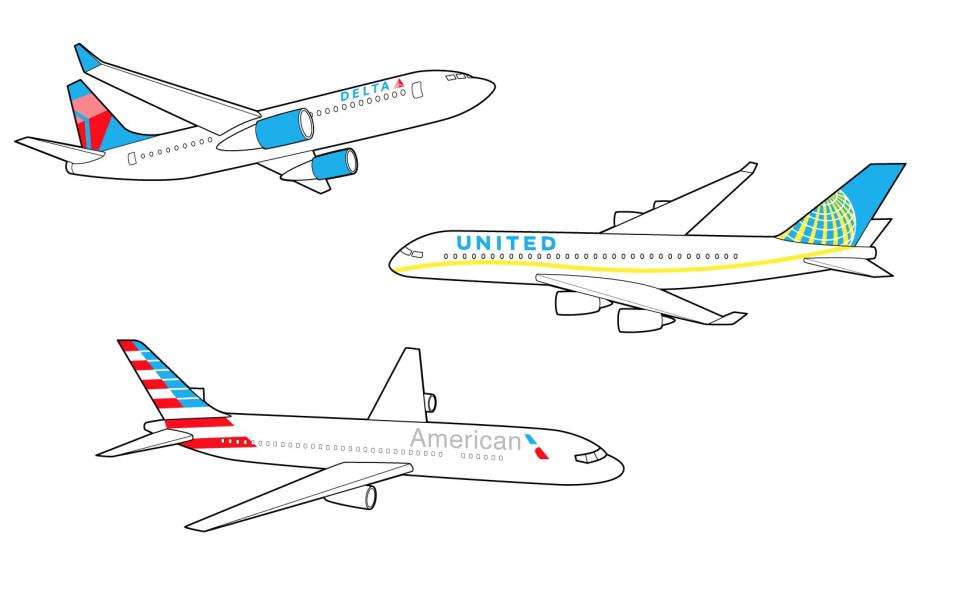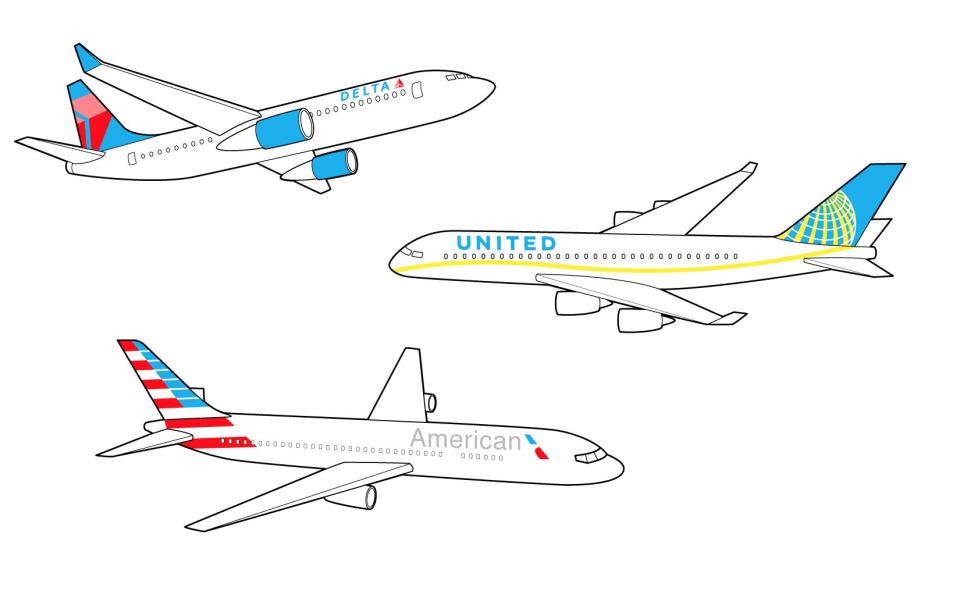What Airlines Are Doing to Prevent Another Southwest Disaster

intelillo airplanes_all_final1.jpg
Illustration by Brown Bird DesignOn Tuesday, a passenger on Southwest Airlines Flight 1380 was killed after an engine failed and a window shattered, resulting in the passenger being sucked halfway out of the plane at 32,500 feet. It was the first passenger fatality on a U.S. airline in nearly 10 years, and the National Transportation Safety Board has started an investigation to determine the cause of the incident. But we’ve been wondering—as have many of our readers—what airlines are doing to make sure this sort of deadly failure doesn’t happen again.
So far, the focus of the investigation is on the CFM56-7B engine that failed Tuesday. It’s one of the world's most popular and widely-used jet engines, with more than 6,700 on commercial airplanes today. "I flew behind that exact engine for years,” says former U.S. Airways Capt. John Cox. “It's a reliable, powerful workhorse.” On Thursday, the FAA announced that it will enact an Airworthiness Directive (AD), an official document that notifies airlines of a safety fault on a specific piece of equipment, for this specific engine type. The agency requires airlines to correct any safety issues mentioned in ADs, but the FAA hasn’t yet released the exact wording for the one addressing the CFM56-7B. "The directive will require an ultrasonic inspection of fan blades,” the agency said in a statement. “Any blades that fail the inspection will have to be replaced.”
Today, as before the incident, planes also undergo hours maintenance inspections, which come in waves—pneumatics checks on the rudder and wing flaps one night, then hours of emergency tests on inflatable slides the next. Pilots also visually inspect the plane they’ll fly before every take-off, says Cox, checking for leaking fluid or loose mechanical parts, signs that something is out of place. Ground crew mechanics also do more intense versions of the same walkthrough every day or two, depending on a given airline's policy, checking hydraulics that help the plane steer and oil levels, as well as visually inspecting the plane's engines for something called metal fatigue, or a weakening of metal due to repeated use, caused for example by flying hundreds of thousands of miles a year. "There should be inspection techniques and procedures in place to detect something like this before there’s a catastrophic event,” NTSB Chairman Robert Sumwalt told CNN on Wednesday. “What we want to find out is why was this not detected ahead of time," he added, suggesting that metal fatigue could be one of the causes of the Flight 1380 engine failure. He said it could take up to 15 months for the NTSB to complete a full investigation.
One former flight attendant responds to the tragedy.
In fact, airlines should’ve been checking for metal fatigue already, according to a “service bulletin” for the for the CFM56-7B that engine manufacturer CFM International released last week. (Those bulletins aren’t the same as a recall but do serve as a heads-up that something could be faulty with a product.) And before that, another of the engines experienced a less-catastrophic failure in 2016, when a fan blade broke off and ripped a gash in the side of a different Southwest plane. As a result of that incident, the FAA proposed an AD on this exact engine type in August 2017; it had not been formally enacted as of Tuesday’s incident. The August 2017 AD, addressing the 2016 accident, said: “The investigation, however, into the root cause of the fan blade failure is not complete. This condition, if not corrected, could result in fan blade failure, uncontained forward release of debris, damage to the engine, and damage to the airplane.” At that time, multiple U.S. airlines—including Southwest—objected the FAA’s order that they inspect each of the 24 indivdual fan blades on hundreds of engines within 12 months, reports Reuters, saying that timeline was too short. But on Thursday, Southwest and CFM announced they would have all of the airline’s CFM56-7B fan blades inspected “over the next 30 days,” according to a statement.
Other U.S. airlines have already started closer inspections of their planes using this engine. “We kicked off our program to address the bulletin [last week] and we will be fully compliant,” says United spokesman Charles Hobart. “We will continue to ensure safety is our top focus at United Airlines," he said. In all, the carrier operates nearly 700 CFM56-7B engines. Meanwhile, "Alaska is accelerating the inspections of our aircraft engines,” a spokesperson said by email. “We began inspecting the fan blades in the engines of all of our 737 fleet after a 2016 airline incident involving another carrier, in advance of any pending FAA directive. We have been working aggressively to complete inspections sooner than recommended. As of today, we have engines on 25 aircraft left to inspect.”
American Airlines told us it has 304 planes with these specific engines, and they too began voluntarily inspecting the CFM56-7B engines’ fan blades after the proposed AD from the FAA last year. Delta has already completed its inspection of its 185 aircraft that have these engines—it started last year after the AD was proposed by the FAA. JetBlue does not use this exact engine type on any of its planes.
Before your flight anxiety kicks in, know that fatal accidents are “extremely rare," says Cox. "Last year alone, U.S. airlines flew 4.3 billion passengers without a single fatality. Not a single one. The most dangerous part of flying, honestly, is driving to the airport."



